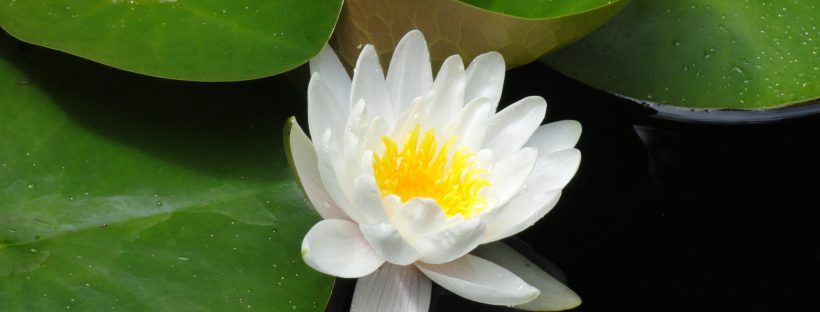Nature can be punishing when bad chemistry or persistent disease from an imbalanced ecosystem throws a pond into chaos. A slight miscalculation or delay in addressing the cause and all can be lost; life itself relies on knowledge of plants and how we take care of their aquatic environment.
With every season comes a list of must-do’s, can’t-it-waits and let’s-hope-it-doesn’t-happens. Creating an evolving things-to-do list, by season, should minimize risk to aquatic plants.

Spring
After spring blasts us from hibernation to assess our pond’s winter damage, we break out our work ethic and tools of the trade and begin the transformation of spring cleaning.
After all, your home extends beyond your house. Pond plants rely on a pond’s ecosystem to ensure a healthy environment during their most active months. Divide and repot plants, when applicable, and introduce new marginal, bog and floater plants—whichever might bring balance to the habitat. But take note: the pond also expects the plants to do their part. Plants with deep roots break down toxins and excessive nutrients into needed oxygen. So the entire ecosystem needs to be on its best behavior and work together.
Perhaps the most impactful spring chore is a thorough vacuuming of the pond from top to bottom. The PondoVac series from OASE—PondoVac Classic and the PondoVac 3, 4 & 5—will remove large debris including leaves and anything else that accumulated over the fall and winter months. This simple chore provides pond plants a good start to the season.

Summer
A good deadheading of aquatic plants, on a consistent basis throughout the summer, helps keep the pond neat and tidy. Remove any foliage that is browning, leaning or deteriorating into the pond. FlexiCut 2 in 1 with it’s adjustable head makes deadheading an easy chore without risk to the pond liner. This reduces debris build-up in the pond and provides room for new plant growth. Keep the pond free of debris with the OASE PondNet for skimming or OASE EasyPick pond pliers with a telescopic handle to remove leaves and small branches.
The summer season also demands maximum aeration to prevent mosquitos and algae blooms and a range of threats to aquatic plants. Water gardens are ideal habitats for a variety of freshwater plants and pond creatures, but only if that pond offers sufficient oxygen levels through aeration.
Waterfalls are effective for aeration and serve to beautify, too. Expect the waterfall to attract birds and other grateful inhabitants to pond banks. OASE offers energy efficient pond and waterfall pumps with advanced technology that ensure a clean and clear waterfall with stable oxygen levels. These pumps work to reliably circulate water with extremely low energy output. Try the OASE waterfall spillway—it’s durable, low maintenance and blends seamlessly into the background. But it’s impact is impressive.

Fall & Winter
Remove pond plants from plant shelves and place them in a lower/deeper section of the pond to ensure roots don’t freeze. Not all plants take kindly to submersion through the winter—some require a temporary new home until the spring returns and the sun and warmth are here to stay.
Fall is also a season to divide aquatic plants, including water lilies and iris. Continue to ensure your pond is free of debris from falling leaves—another task for the OASE EasyPick. Remove dying plant foliage from the pond with the OASE FlexiCut 2 in 1 as it can eventually pollute the water. After plants have ceased growing, cut back and lower the pot to the bottom of the pond.
Some tropical plants can bloom throughout winter if brought inside and kept in a tub container with at least six hours of light—or remove the tuber from the pot after the foliage has died.
All aquatic plants are different so it’s important to research the specific needs of each plant. Luckily, resources are aplenty. The 21st century has brought technology—efficient, economical, user-friendly technology. Solutions to every pond plant scenario are hashed out online by water garden enthusiasts.
Original OASE Living Water article can be found here.


